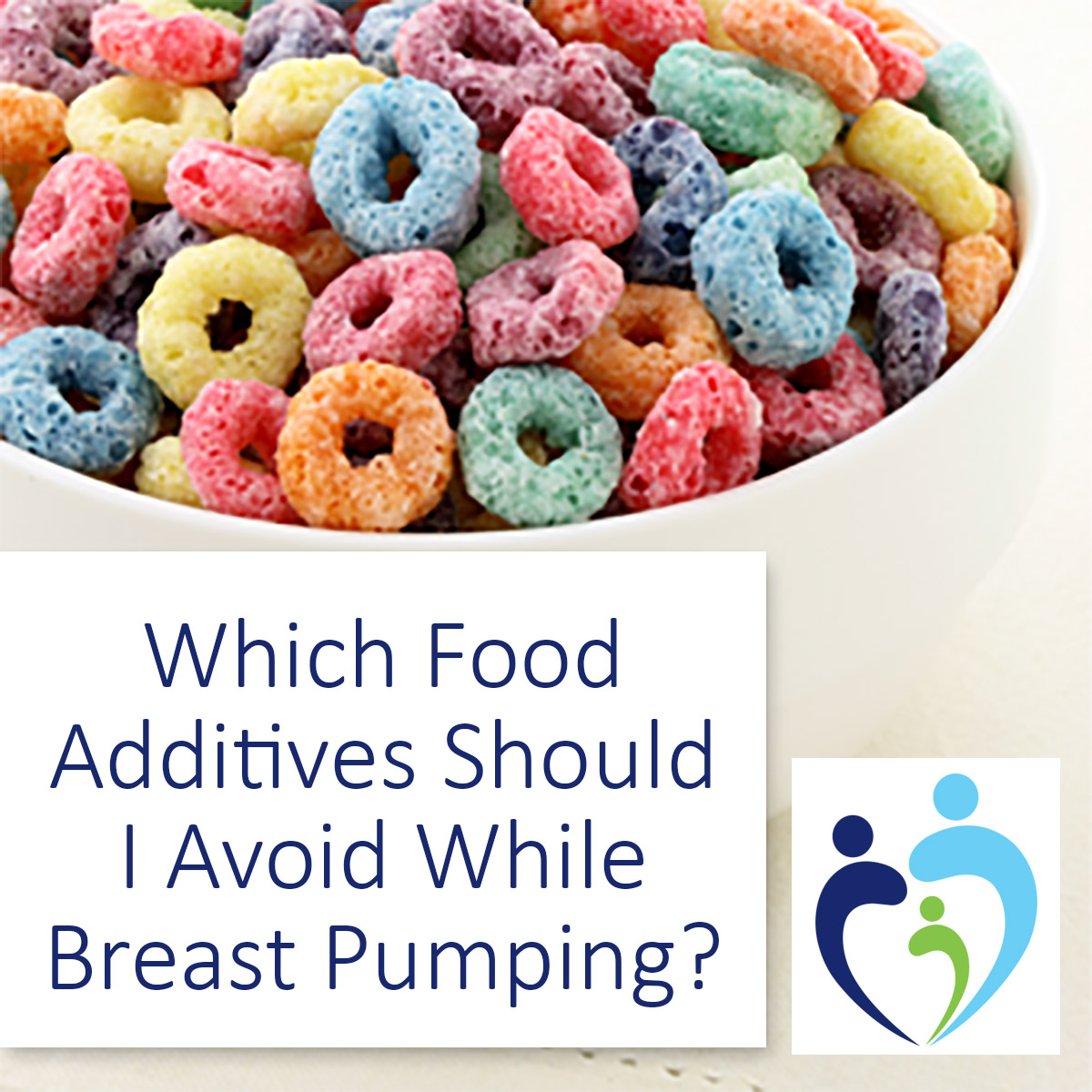Which Food Additives Should I Avoid While Breast Pumping?
In our continuing series of tips to keep you sane, savvy, and healthy as you breast pump milk for your baby, we want to talk a bit about food additives.
A few weeks ago we discussed the meaning of the word “natural” as it applies to food labels, determining that “no additives” is synonymous.
As a reminder, food additives are added in order to make something last or look better than it naturally should. Preservatives extend the shelf-life by shortening the deterioration process. However, these additives may also affect your body’s digestion process. Flavorings and coloring keep food looking and smelling good in while it is processed, packaged, transported, displayed, sold, taken home, and eaten. Other additives are used to make foods softer, crisper, or to enhance flavor.
While we always advise nursing moms to eat a continually healthy, balanced, and natural diet, sometimes there’s no recourse but to grab something prepared or packaged, which will likely contain food additives.

To help you make the best choices with the least thought, here is a list of the additives you absolutely want to avoid while nursing and/or pumping (and why).
Artificial Coloring and Dyes – especially red 40, yellow 5, yellow 6, and blue 2
These might be the most difficult additives to avoid because they seem to be everywhere. Boxed macaroni and cheese, bright red sodas, those neon colored chips should clearly raise a “red” flag in your mind. But these dyes also find their way into cereals, crackers, even fish.
Artificial Flavorings
When you read a food label, often times this term is innocuously tacked onto the end as in, “oh, yes, and some flavorings you shouldn’t worry about too much.” We aren’t suggesting you worry about them, exactly, rather do your best to avoid products with these additives. They can affect enzymatic processes and thyroid functions within the body and may be linked to allergic reactions, hyperactivity, and asthma.
Artificial Sweeteners – Acesulfame-K, As-partame, Equal®, NutraSweet®, Sac-charin, Sweet’n Low®, Sucralose, Splenda® & Sorbitol
How do you sweeten food without caloric sugar or natural honey? You add highly processed, chemically-derived, zero-calories sweeteners. These additives can adversely affect metabolism and contribute to cancer. Aspartame is a known offender, which experts consider to be poisonous to the human body.
Benzoate Preservatives – BHT, BHA, TBHQ
These compounds work to preserve fats beyond their natural freshness. Among other dangers, they can affect estrogen balance and levels.
Brominated Vegetable Oil (BVO)
You will find this additive in many lime or lemon based drinks. It increases triglycerides and cholesterol levels as well as contributing to liver, thyroid, heart, and kidney damage.
High Fructose Corn Syrup (HFCS)
In the states it seems that HFCS is everywhere. This additive greatly taxes the liver and increases the risk for type-2 diabetes, coronary heart disease, stroke, and cancer.
MSG
This flavor enhancer also seems to be everywhere: restaurant food, salad dressings, chips, frozen entrees, soups—you name it. It may lead to headaches, nausea, weakness, wheezing, edema, erratic changes in heart rate, labored breathing, and burning sensations (ahem, we’ve got enough heart burn already, thank you).
Olestra
There’s no way to make a notoriously unhealthy food healthy (think potato chips, french fries, fried chicken). That includes substituting this indigestible fat. Olestra inhibits absorption of some nutrients in the body and it’s linked to gastrointestinal disease, diarrhea, gas, cramps, bleeding, and incontinence. Breastfeeding is hard enough—let’s not consciously invite some olestra-induced diarrhea into the day.
Shortening, Hydrogenated and Partially Hydrogenated Oils—Palm and Soybean, specifically
These synthetically produced fats are used in more than 40,000 food products in the U.S. because they’re cheap. They contribute to high cholesterol and heart disease and should be avoided during nursing and beyond.
That’s a general list so you have the knowledge to make an informed decision.
Sources:





